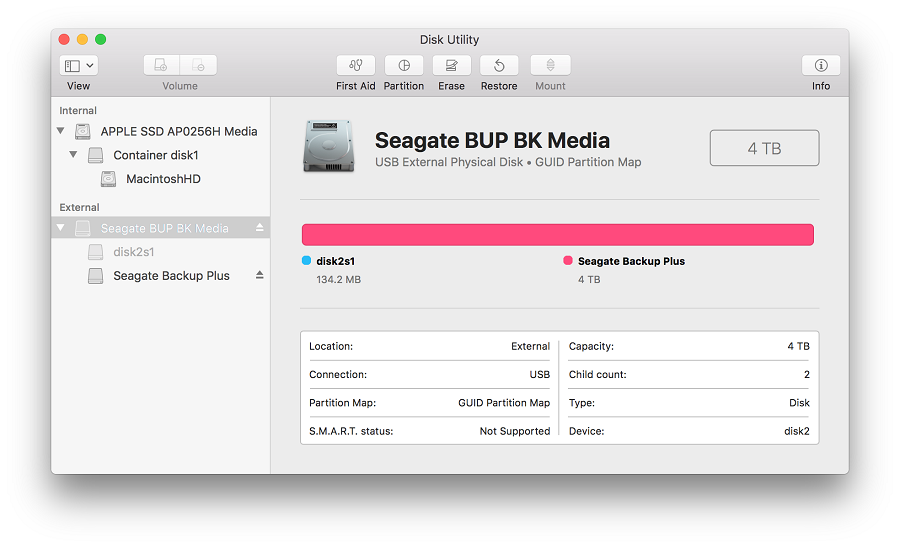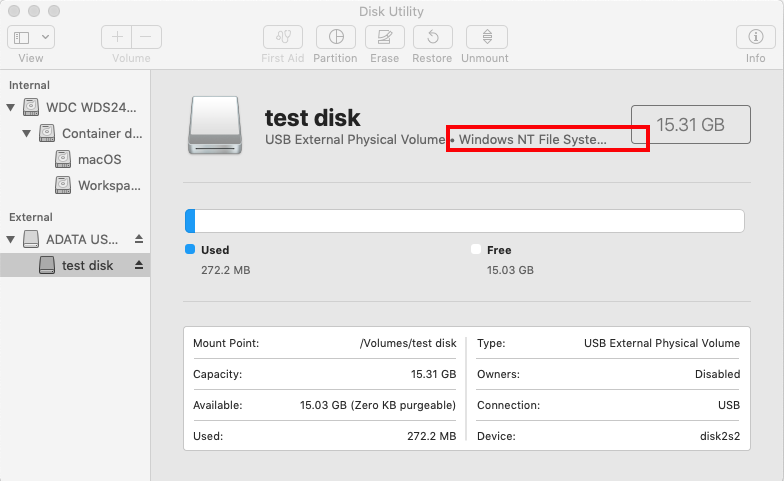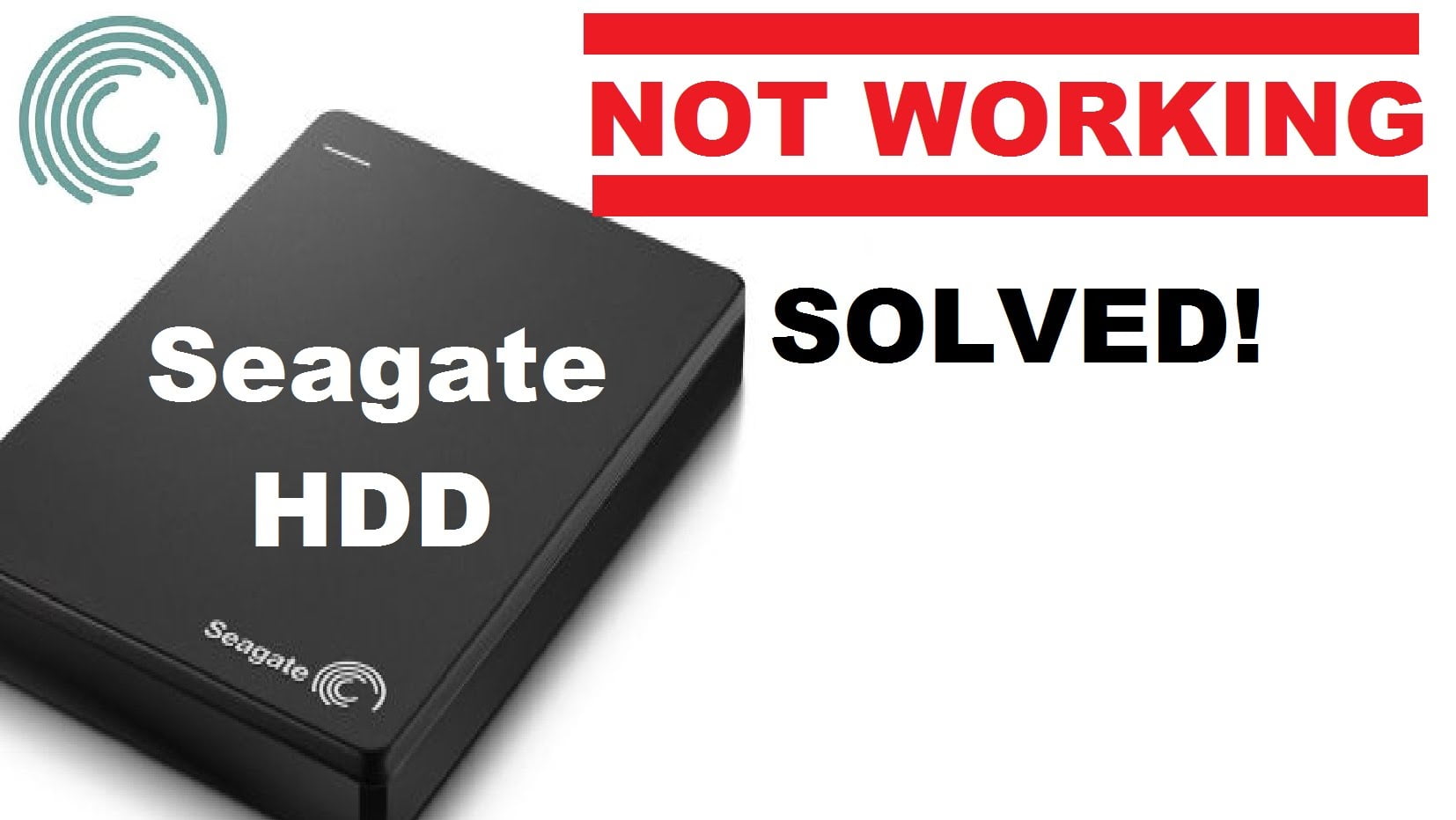


- Disk utility for seagate on mac for mac#
- Disk utility for seagate on mac mac os#
- Disk utility for seagate on mac windows#
Disk utility for seagate on mac windows#
When using a drive between macOS and Windows, drives should always be formatted on macOS because not all Windows allocation unit sizes (block sizes) are supported by macOS. This error message has been seen with drives formatted ExFAT. Once rebooted, reconnect the drive and try to format the drive again.Įrror Message - error 49223 If that doesn’t resolve the issue then try shutting your computer down, then unplug the disk and reboot with the drive disconnected. With the volume unmounted it should allow the process to complete. If that does not work then highlight the volume and click unmount. If you believe there is nothing keeping the drive busy then simply try to format the drive again. Eject the Disk Image and try formatting again. If you have something open on the drive like a Disk Image or if something else is keeping the drive busy, you may see this error. This error can be caused for a few reasons. Instructions for ExFAT formatting can be found here. If you are using this drive between macOS and Windows then back up any important data on the drive and reformat the drive ExFAT on macOS. Remember if GUID is not an available option then Show All Devices in the upper left is not selected as shown in the beginning of the article. This will allow Apple's Disk Utility to create its own volumes. There may be other ways to resolve this issue, but the easiest way is to erase the disk and set it up with a GUID scheme. For more technical information see Apple documentation - here. Apple requires at least 200 MB for this volume which is why this error occurs. It’s caused by Apple trying to use the 134.2 MB Microsoft Reserved volume for their EFI volume. This error can occur when either erasing or partitioning the disk. Instructions for HFS+ formatting can be found here.Įrror Message - MediaKit reports not enough space
Disk utility for seagate on mac mac os#
If you are using this drive for macOS only, then reformat the drive Mac OS Extended (Journaled) also referred to as HFS+ for best compatibility. If you are using this drive between macOS and Windows, back up any important data on the drive and reformat the drive ExFAT on macOS. If you need to go between Mac and Windows then you would want to select ExFAT. For example Mac OS Extended (Journaled) or APFS.
Disk utility for seagate on mac for mac#
If you are using it for Mac only then select a format specifically for macOS.

To resolve this, you must first erase the disk and set the Scheme to GUID Partition Map. If you hover your mouse over the partition button you can see the tooltip provided by Apple. The button is greyed out because the drive is set up as MBR which is typically used for drives less than 3 TB. This was first seen in macOS 10.11 (El Capitan) and has continued. If you will be going between Mac and Windows then there should be no issues. If you plan on using the drive for Mac only then you will want to erase the disk. For more technical information see Microsoft documentation - here. This is typical and not an issue when using the drive as NTFS. It is shown as Microsoft Reserved in Disk Utility. This volume exists because the drive is set up for Windows using GUID/ NTFS. What is that 134.2 MB volume on the drive? Which is why selecting the non-indented entry is important when formatting the drive. This is important because when erasing the drive you will get different options depending on whether you have the volume or disk selected. The indented entries directly below are the volumes (partitions). The non-indented entry is the physical disk which typically has Media in the name.

You should see at least two, sometimes three, entries for your drive depending on how it is formatted. If you are running 10.12 or 10.11 this step is not required as the option is not available. Change the view to Show All Devices instead of the default which is Show Only Volumes. If you are running macOS 10.13 (High Sierra) or later it is important to change the view in Disk Utility. Note: Reformatting the drive will erase all data on the drive, so you should copy any data you want off the drive prior to formatting. Not sure what version you are using? Click here to determine your version of macOS. This article applies to the following versions of macOS: The following is not an exhaustive list of error messages, so you may not find your specific error here. This article covers some of the common error messages and questions you might encounter while using Disk Utility.


 0 kommentar(er)
0 kommentar(er)
